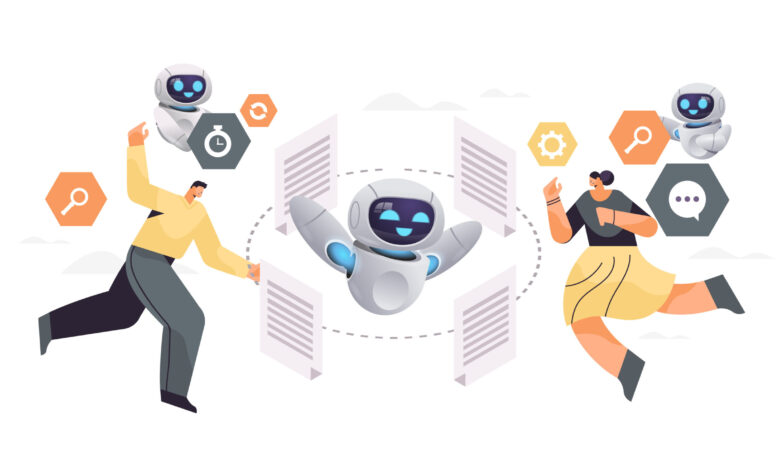The Big ‘Book’ Of Artificial Intelligence Statistics For B2B Practitioners

While I love talking about AI, most discussions become an echo chamber around its pitfalls, ethics and potential that ultimately boil down to a forward-looking, “AI will be mission critical!” As marketers and salespeople exchange their own (yet similar) opinions on the best implementation and uses of the technology, there’s a flood of AI-focused research adding facts and figures to support their statements.
While I’m personally a fan of shifting AI’s focus from business-centered initiatives to home-related tasks, there’s no denying the value the technology brings to organizations. With that in mind, I’ve rounded up some of the most recent AI-focused research reports to provide tangible insights into AI adoption and implementation. Make sure to bookmark this page and check back frequently, as I’ll be updating as new research is released!
Businesses That Adopt AI Are 7X More Likely To Meet Or Exceed Expectations
Sales and marketing teams are rapidly adopting AI, as 95% of businesses already use or plan to adopt AI before 2025, new research revealed. ON24, an intelligent engagement and webinar platform, released “The State of AI in B2B Marketing in 2024,” a research report that uncovered and discussed AI’s impact on business performance.
Specifically, the research found that teams who already leverage AI are 7X more likely to meet or exceed their organizational goals, while those that have yet to adopt it are 3X more likely to miss their targets.
“AI is more than a trend: It’s a business imperative, and our research shows that those that don’t adapt will get left behind,” said Sharat Sharan, Co-Founder, President and CEO of ON24, in a statement. “That’s why we’ve put AI at the center of our platform innovation, empowering our industry-leading customers to innovate with intelligent engagement and drive cost-effective revenue growth.”
Nearly 100% Of Marketers Currently Or Plan To Leverage AI
Revenue marketing consultancy Demand Spring released “AI In B2B Marketing,” which focused on AI implementation and how companies are using it to inform future strategies. The report doubled-down on the sheer volume of AI adoption, as 96% of respondents are either actively using AI or acknowledging its potential. Other key findings include:
- Marketers are prioritizing AI for its ability to improve productivity (76%) and enhance customer engagement (52%);
- 63% of respondents said they lack internal AI expertise, particularly in data analysis and interpretation; and
- 43% indicated that they are establishing ethical guidelines for AI use to address potential biases in algorithms, data privacy concerns and manipulative marketing tactics.
“B2B marketers are already actively utilizing AI for content generation, data analysis and marketing automation tasks, and this is only going to grow as more organizations embrace the technology and learn how it can help them to find efficiencies within their marketing teams,” said Mark Emond, Founder and CEO of Demand Spring, in a statement. “It’s an exciting time and certainly a turning point for those B2B marketing organizations who choose to embrace AI adoption.”
77% Of Practitioners Believe AI’s Moved Beyond The Hype
To provide some color around the specific benefits of AI adoption — and illustrate the technology’s move from hype to reality — business software and services review website G2 released the “2024 State Of Buyer Behavior,” which revealed:
- 77% of respondents agreed or strongly agreed that software companies have genuinely advanced AI technology in their products beyond merely capitalizing on the AI hype;
- Of buyers who said their organization had purchased an AI platform within the last three months, 83% already reported positive ROI from that purchase; and
- Employee productivity was the No. 1 method (44%) for measuring ROI from AI software or AI-powered software investments.
“Today’s software buyer is not willing to wait to see value,” said Chris Voce, VP of Market Research at G2, in a statement. “These rising ROI expectations are coupled with slowed deal velocity, increased buying cycles and extra scrutiny on software investments by executive leadership. For software and services vendors, the added pressure and intensity of this landscape means understanding today’s buyer and their context is essential to navigating the turbulence and achieving growth.”
Learn More



